#Green Computing
Explore tagged Tumblr posts
Text
Green Bytes: The Journey Towards Sustainable IT & Green Computing.
Sanjay Kumar Mohindroo Sanjay Kumar Mohindroo. skm.stayingalive.in This post explores sustainable IT practices, energy-efficient computing, e-waste reduction, and green digital infrastructures to spark dialogue and inspire action.
A New Era for IT Embracing Change for a Greener Tomorrow In our fast-moving world, technology drives our lives in every way. We see power in every byte we use and…
#Clean Tech#Digital Infrastructures#E-Waste Reduction#Eco-Friendly IT#Energy-Efficient Computing#Green Computing#Green Technology#News#Sanjay Kumar Mohindroo#Smart Tech#Sustainable Data Centers#Sustainable IT
0 notes
Text
Batman: * enters the room with a bunch of children following behind *
JLA: ???
Green Lantern: Huh
Green Arrow: Batman, who the fuck are these kids?
Batman: Language
Batman: These are my children. Agent A is sick so I had to bring then in
Wonder Woman: I am not acquainted with the hero know as 'agent a'
Aquaman: As long as they don't cause trouble I don't see the issue
Flash: ???
Flash: You don't see the issue? Batman didn't have any kids until not that long ago where did they COME FROM???
Batman: ...
Batman: Oldest one i found in the circus
Batman: Second eldest was born from the shadows
Green Arrow: Wha-
Batman: Third one, i found in the trash
Batman: Fourth one followed me home after I forgot the door open
Batman: And my youngest my ex mailed to me
Aquaman: Mailed??
Batman: I tried to return him but the post office guy said neither Heaven nor Hell wanted him
Batman: Or anyone in Gotham, for that matter
JLA: ...
Flash: ...
Flash: ... sorry I asked
#jason: WonderWomanImYourBiggestFanCanIGetAnAutographPlease#Cass: * emerges from the shadows as batman is speaking *#dick: * already upside down hamging from the ceiling somehow *#tim: * hacks into thr JLAs main computer to play minecraft *#damian: * bites *#bruce wayne#batgirl#batfamily#batman comics#batman#bat family#justice league#jla#justice leage of america#green arrow#tim drake#damian wayne#oliver queen#dick grayson#wonder woman#cassandra cain#jason todd#batfam shenanigans#flash#barry allen#aquaman#green lantern#hal jordan#robin dc
7K notes
·
View notes
Text
What is Green Computing? Implications and Benefits

Green computing, also known as sustainable computing, is a practice that focuses on designing, using, and disposing of computers and related systems in a way that reduces environmental impact. With the rising concerns over climate change, global warming, and resource depletion, the demand for more eco-friendly computing practices has become crucial. Companies, governments, and individuals are now more aware of the carbon footprint generated by digital technologies. Green computing offers solutions that aim to minimize energy consumption, reduce electronic waste (e-waste), and promote sustainability in the tech industry.
The primary goal of green computing is to develop energy-efficient computers, servers, and data centers that can reduce their power usage. This also involves creating better cooling systems, recycling materials, and using renewable energy sources to power computing operations. In turn, these practices not only help in conserving resources but also reduce operational costs for businesses. Companies that adopt green computing can lower their energy bills and maintenance costs while contributing to environmental sustainability.
One of the major concerns in green computing is e-waste management. The rapid advancement of technology means that devices are often discarded after just a few years of use. E-waste contains hazardous materials such as lead, mercury, and cadmium, which can contaminate the environment if not properly disposed of. Green computing emphasizes recycling and reusing electronic components, reducing the harmful effects of improperly discarded devices. Many tech companies are also investing in eco-friendly product designs, ensuring that the materials used can be recycled or safely disposed of.
Virtualization is another critical aspect of green computing. By using virtual machines (VMs), organizations can run multiple operating systems and applications on a single physical server. This practice reduces the number of physical servers required, leading to lower energy consumption and less heat generation. Cloud computing, which relies on virtualized servers, is a prime example of how technology can be made more efficient. It allows businesses to scale their operations while minimizing their environmental footprint.
Sustainability initiatives in green computing are also promoting the use of energy-efficient algorithms and software. Many software companies are now optimizing their code to use less processing power, which in turn reduces energy consumption. For instance, data centers are using advanced cooling systems and dynamic resource allocation to ensure that they only use the power necessary to run their operations. The result is a more efficient and cost-effective computing environment.
Green computing has implications that extend beyond the business world. On an individual level, consumers are becoming more aware of the importance of energy-efficient devices. By choosing energy-saving computers and recycling old electronics, individuals can play a part in reducing the environmental impact of digital technology. Moreover, governments are introducing regulations and policies that encourage sustainable computing practices, pushing the tech industry to adopt greener solutions.
In conclusion, green computing is a necessary and growing trend that addresses both environmental concerns and economic efficiency. As more companies and individuals recognize the benefits of reducing their carbon footprint, green computing will continue to play a pivotal role in shaping the future of technology. To learn more about green computing, its implications, and how it can benefit your business, check out our full article here.
0 notes
Text
Effiziente IT-Strategien für nachhaltiges Green Computing
In der heutigen digitalen Ära sind Unternehmen zunehmend gefordert, nachhaltige Praktiken in ihre IT-Strategien zu integrieren. Green Computing, also umweltfreundliches Rechnen, spielt eine entscheidende Rolle bei der Reduzierung des ökologischen Fußabdrucks von IT-Ressourcen. Effiziente IT-Strategien können nicht nur die Betriebskosten senken, sondern auch die Umweltbelastung minimieren. In…
#Automatisierung#Energieeffizienz#Green Computing#IT-Management#IT-Ressourcen#IT-Strategie#IT-Strategien#Machine Learning#Nachhaltigkeit#Unternehmenskultur#Virtualisierung
0 notes
Text
Green Computing vs. Cloud Computing: Understanding the Differences

Introduction
In today’s rapidly evolving technological landscape, terms like “Green Computing” and “Cloud Computing” are frequently used but often misunderstood. While both concepts aim to improve efficiency and sustainability in IT operations, they serve distinct purposes and employ different strategies. In this article, we’ll delve into the differences between green computing and cloud computing, shedding light on their respective benefits and implications.
Read More
#green cloud computing#green computing#cloud computing#aws services company india#cloud computing services#green cloud computing services#green cloud computing company#aws services#amazon web services
0 notes
Text
Learn about Green Computing and go through https://thefuturisticminds.com for other future related blogs.
0 notes
Text










♡ because that's what love is
#hands#stimboard#food#stimming#slime#white#grey#gray#black#green#computer#objectum#techum#art#drawing#music#love#heart#star#edgar electric dreams#edgar#electric dreams
4K notes
·
View notes
Text
Eco-Friendly Synergy: How Daniel Reitberg Harnesses AI with Green Technology

AI and Green Technology: A Sustainable Fusion
In this enlightening article, Daniel Reitberg explores the harmonious alliance between Artificial Intelligence and Green Technology, revealing how this synergy is paving the way for a more sustainable future.
Reducing Carbon Footprints: AI-Driven Energy Efficiency
With a keen eye for innovation, Daniel Reitberg delves into how AI is optimizing energy usage, reducing wastage, and ultimately diminishing carbon footprints. Green tech, empowered by AI, has become a powerful ally in the fight against climate change.
Smart Resource Management: AI's Contribution to Sustainability
Discover how AI, under the guidance of Daniel Reitberg, is improving resource management in agriculture and beyond. AI-driven precision and data analytics are ushering in a new era of sustainable resource utilization.
AI-Powered Clean Energy: A Cleaner Tomorrow
In this section, Daniel Reitberg uncovers the exciting developments in clean energy with the assistance of AI. From wind and solar power to energy-efficient grids, AI is accelerating the shift towards renewable and cleaner energy sources.
Balancing Act: Benefits and Challenges of AI in Green Technology
Explore the delicate balance between the advantages and ethical considerations of AI in green tech with Daniel Reitberg. Learn how this partnership, when handled responsibly, can help create a greener and more sustainable world.
Conclusion: A Greener Horizon with AI and Green Tech
Daniel Reitberg's insight into the fusion of AI and Green Technology inspires hope for a future where sustainability and innovation go hand in hand. AI is not just a tool; it's a catalyst for a greener, cleaner, and more eco-conscious world.
#artificial intelligence#machine learning#deep learning#technology#robotics#autonomous vehicles#green technology#green computing#clean energy#sustainable energy#resource management#sustainability
0 notes
Text










classic windows media player frames. unedited at https://wmpskinsarchive.neocities.org/ :)
#minez#webcore#computer window#music#black#blue#grey#gray#transparent#green#rentry resources#carrd resources#graphic resources#skeumorphism#old web#frames
2K notes
·
View notes
Text
What is the role of green computing in sustainable development?
Introduction
Green Computing is a concept that focuses on reducing the environmental impact of computing technologies while promoting sustainable development. This article explores the importance of sustainable development, defines green computing, and provides an overview of the topics covered.
I. Understanding Green Computing
A. Definition and Concept: The term “green computing” describes the development, implementation, and consumption of computer systems with minimal environmental impact. It includes employing energy-saving techniques.
B. Objectives and Goals: Green computing aims to create a sustainable and environmentally friendly IT industry.
C. Principles and Practices: Green Computing is guided by principles such as energy efficiency, resource optimization, and responsible disposal of electronic waste. It encompasses practices like virtualization, power management techniques, and the use of renewable energy sources.
II. Environmental Impact of Computing
A. Energy Consumption and Efficiency: Green Computing focuses on energy-efficient hardware, power usage optimization, and energy-saving techniques.
B. E-Waste Management: Rapid technological advancements generate electronic waste; Green Computing promotes responsible e-waste management, including recycling, refurbishing, and proper disposal, minimizing environmental impact.
C. Carbon Footprint Reduction: IT industry’s carbon footprint is reduced through Green Computing, energy-efficient practices, renewable energy, and carbon offset programs.
III. Benefits of Green Computing
A. Environmental Benefits: Green computing reduces energy consumption and carbon emissions, preserving natural resources, mitigating climate change. It encourages biodiversity, promotes sustainable ecosystems, and cleans air and water.
B. Economic Benefits: Green Computing can lead to significant cost savings through reduced energy bills, optimized resource utilization, and decreased maintenance costs. It also opens up opportunities for innovation, resource efficiency, and new green technology markets.
C. Social Benefits: Green computing promotes sustainable development, improves quality of life, encourages responsible technology usage, raises environmental awareness, and fosters social responsibility.
IV. Green Computing Technologies and Strategies
A. Energy-Efficient Hardware: Having energy-efficient hardware, such as CPUs, servers, and storage devices, can assist computer systems in using less power and emitting less pollution.
B. Virtualization and Cloud Computing: Under virtualization, more than one virtual machine can run on a single physical server, reducing the demand for real devices and increasing resource productivity. Distributing computer resources is made possible by cloud computing, further increasing energy efficiency.
C. Power Management Techniques: Power management techniques like sleep mode, dynamic voltage scaling, and intelligent distribution reduce energy consumption during idle periods.
D. Data Center Optimization: Efficient cooling, server consolidation, and advanced infrastructure management enhance data center efficiency.
E. Renewable Energy Sources: Using renewable resources helps reduce carbon emissions and dependency on fossil fuels.
V. Green Computing in Business and Organizations
A. Adoption of Green IT Policies: Green IT policies can be implemented by businesses and organizations to enhance energy efficiency, manage e-waste, and ensure responsible procurement of IT equipment.
B. Green Data Centers: Implementing green practices in data centers, like energy-efficient servers helps organizations reduce energy consumption and carbon footprint.
C. Sustainable IT Procurement: Green computing involves purchasing IT equipment from environmentally responsible vendors, considering product lifecycle.
D. Green Software Development: Efficient software development, code optimization, and sustainable practices improve system efficiency.
E. Employee Engagement and Training: Employee involvement, training, and environmental awareness improve energy efficiency.
VI. Green Computing in Education
A. Sustainable IT Infrastructure in Schools and Universities: Educational institutions can enhance IT infrastructure, and incorporate sustainability principles.
B. E-Learning and Digital Resources: E-learning reduces paper, energy, and environmental impact.
C. Promoting Environmental Awareness: Educational institutions significantly promote green computing, sustainability, and environmental awareness.
VII. Government Initiatives and Regulations
A. Encouraging Green Computing Practices: Governments can encourage green computing adoption through awareness campaigns, incentives, and industry collaborations.
B. Energy Efficiency Standards: Establishing and enforcing energy efficiency standards for computing devices and data centers ensures that products meet minimum requirements for energy consumption.
C. Financial Incentives and Tax Credits: Governments can encourage green computing adoption through incentives, tax credits, and grants.
VIII. Challenges and Barriers
A. Cost and Return on Investment: Initial implementation costs and perceived lack of immediate returns on investment can hinder the adoption of green computing practices. Yet, the long-term economic savings and environmental advantages often surpass the initial expenses.
B. Lack of Awareness and Education: Limited awareness and understanding of green computing concepts and practices can impede their adoption. Education and training programs can address this barrier and promote broader adoption.
C. Technical and Infrastructure Limitations: Challenges in energy-efficient solutions arise from outdated infrastructure, compatibility issues, and limited technical capabilities.
X. Future Trends and Innovations in Green Computing
A. Advancements in Energy-Efficient Hardware: Advancements in hardware technology, including low-power CPUs, energy-efficient storage devices are expected to reduce energy consumption in computer systems.
B. Artificial Intelligence for Green Computing: AI can enhance energy efficiency, automate power management, leading to more sustainable computing environments.
XI. Summary and Key Takeaways
Green Computing is a vital aspect of sustainable development, aiming to reduce the environmental impact of computing technologies. Businesses, companies, and educational institutions should adopt energy-efficient hardware, reduce resource consumption, and implement sustainable methods to achieve a greener future.
Read More at - https://www.thetechrobot.com/
1 note
·
View note
Text
Stickerpack I just finished! :-)

#frutiger aero#had so much fun with this omg#i draw#blue#green#fish#old web#idk what to taggg#stickerpack#computer
1K notes
·
View notes
Text



THE GREEN KNIGHT Dir. David Lowery, 2021 Dev Patel as Sir Gawain
#this is just me testing out gifmaking on my new computer#also had to upgrade to ps 2025 from ps 2022 i think?#and i am very confused by how resizing is working rn????#like i guess this looks normal here but within ps it has to be at 200% to be this size? if that makes sense?#i think something might be fucked up in my settings? or is it a glitch?#annoying#also! rebuilding my standard actions... woof#thegreenknightedit#filmedit#movieedit#devpateledit#cinematv#fantasyedit#the green knight#dev patel#david lowery#2020s#made by carolyn#he's being soooooo fitz here <3#1k
1K notes
·
View notes
Text
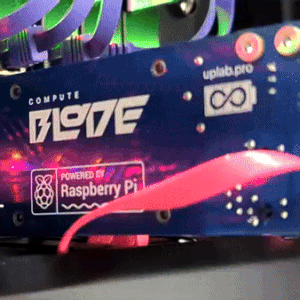
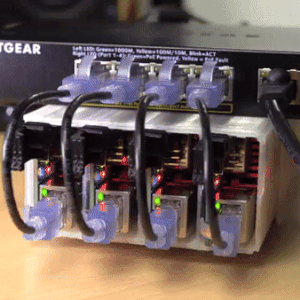
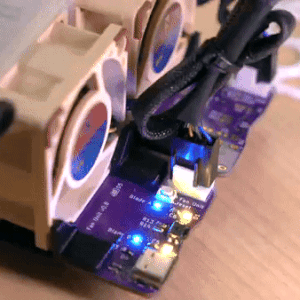
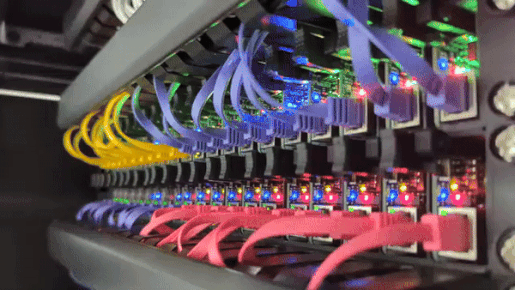
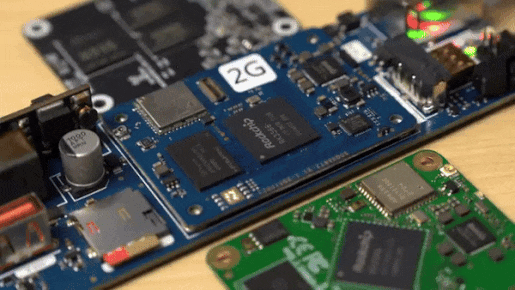
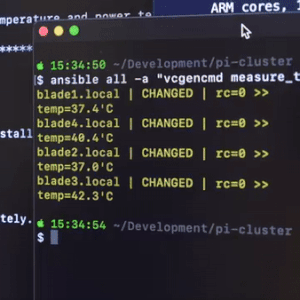
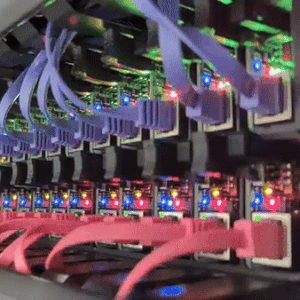
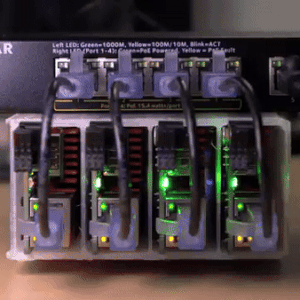
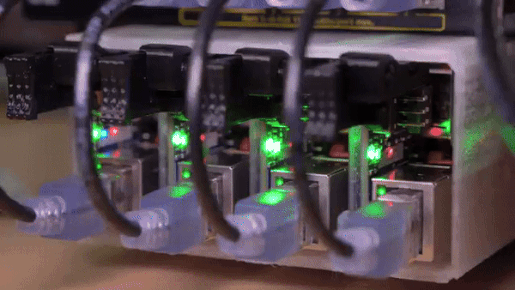
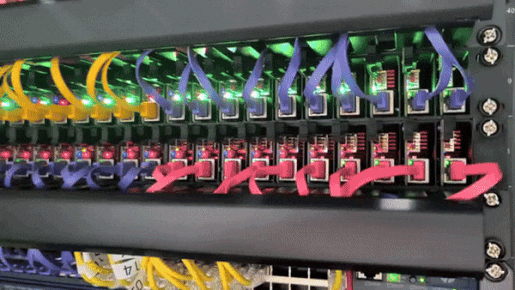


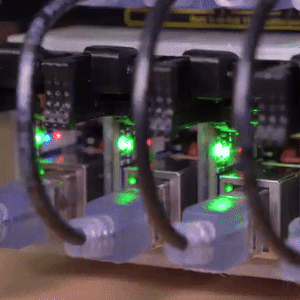
the computer blade | source
#i do not know enough about pi clusters to write ids for this post. apologies#talos gifs#stim gifs#stim#tech stim#technology#techcore#computers#raspberry pi#circuit boards#wires#cables#blinking lights#glow#plastic#black#gray#purple#pink#blue#green#cyberpunk#robotcore#robot stim
4K notes
·
View notes
Note
Can I request some computer themed turquoise and lime green dividers, if it's okay?
Hi^^ anonnie! I did some 90's computer stuff. Hope it works for you!

Retro-Style Desktop

Hex code: #79ece0

Hex code: #067a7b

Hex code: #81B622

Hex code: #d1ff7e






















Like/rb if use // No need to credit me
#omi.resources#dividers#line dividers#mini banners#banners#color palettes#line divider#mini banner#color palette#graphics#colors#green#green aesthetic#green dividers#green banners#teal aesthetic#turquoise#lime green#90's aesthetic#computer#desktop#retro aesthetic#gif
1K notes
·
View notes
Text
Superman: No, Green Lantern, we’re not going to sell merchandise. We’re a non-profit organization.
Green Lantern: Oh, come on! It’s for a good cause! People are already profiting off unofficial stuff out there. Some people are even making millions selling sexy roleplay videos of Superman/Batman!
Superman: Batman’s already funding the Watchtower… wait, what?
Green Lantern: Fine, forget I said anything!
Later…
Superman: [mumbling as he hovers his mouse over a video thumbnail] Don’t do it, Clark. It’s unethical. Bruce wouldn’t like it...
Batman: [suddenly appears in a video call] Oh, don’t watch that one. The production quality is horrible. There are much better ones out there. [scrolls down the page for him] Here, watch this one instead.
#bruce spying on everyone’s computer activity#hacker bruce#dc headcanon#incorrect dc quotes#drabble#text post#dc#superbat#superman x batman#batman x superman#superman/batman#batman/superman#superman#batman#clark kent#bruce wayne#justice league#green lantern
1K notes
·
View notes
Text

#blue#blue cybercore#green tech#green technology#green#green aesthetic#y2k#cybercore#cyberpunk#techno pagan#y2k futurism#2000s futurism#2000s tech#y2k aesthetic#y2k nostalgia#old ads#Japanese#retro Japan#vintage Japan#vintage Asia#cybercore aesthetic#cyber goth#cyber y2k#cyber#cyberpunk aesthetic#old tech#computer aesthetic#nerdy#y2kcore#y2k fashion
815 notes
·
View notes